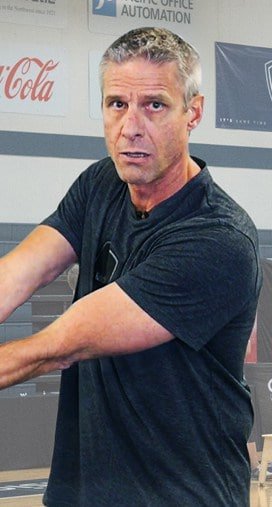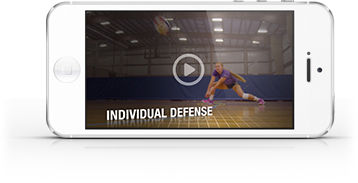Anecdotally, more and more college athletes are showing up freshman year already with a history of major injuries. These range from minor ankle tweaks to major knee, shoulder, and/or back issues. Many coaches are aware that the trends of youth volleyball in this country are to “play as much as possible” or to “sport specialize” at a very early age. Without getting too academic, it’s safe to say that the blend of sport and education in this country (i.e. scholarships) coupled with the boom of the volleyball club scene has driven these young athletes to create over-use injuries, which at an early age in their young lives, can bode for major imbalances at the college level and beyond. We are all guilty – college recruiters/coaches, club volleyball coaches/directors and parents. However, we are not powerless to change this injury curve!
The previous sports performance article gave a brief over-view of training for the college volleyball athlete. If you remember correctly, the primary responsibility of sport performance training is to keep the athlete injury free while the secondary responsibility is to increase performance metrics. If you can keep the athlete injury free, he/she will be able to take more effective repetitions in practice, recover faster from practices/ competitions, and generally be able to gain serious performance markers in metrics specific to volleyball (i.e. ability to repeat a superior vertical jump relative to the opponent).
Now, you may be asking yourselves, “How is this possible when I’m a club coach that sees my athletes for 2 practices per week at only 2 hours per practice? I’m limited in time, facility space, AND I only coach 12’s!” Rest assured there are plenty of things YOU can be doing NOW to minimize injury in your gym – no matter the age level that you’re coaching.
Firstly, it starts with practice planning. Injuries tend to occur because of a combination of two things: bad skill form and fatigue. Are you training correct technique on approaches, so that your athlete keeps the ball in front of him/her and within his/her safe attacking window AND lands on two feet? Are you training correct passing position, so that your athletes are not putting undue pressure on their backs and knees? Are you training blocking systems to work together and not having your middle blockers go coast to coast on the net if they are not yet ready to do so? These little things can make a BIG difference in putting your players in an injury prone position...and even the strongest athletes get injured when put in injury prone positions. Plan your practice so that you teach correct technique, train it within an appropriate number of repetitions with breaks, and be patient for the athlete to re-produce the correct technique over time. Most importantly, HOLD YOUR ATHLETES ACCOUNTABLE TO PERFORM THE TECHNIQUE CORRECTLY.
Second, you can increase your athlete’s ability to perform correct repetitions if you can increase their ability to handle these reps. This starts with a dynamic warm-up/ knee injury prevention program that can be completed in the first 15minutes of your practice. You may request your team to arrive 30minutes prior to practice, so that this and additional warm-up can be completed prior to ball handling, etc. Dynamic warm-ups are used at every level and even in other sports with the purpose of increasing general range of motion, heart rate, stability & mobility chains, and movement rehearsal.
Dynamic Warm-up/ Knee Injury Prevention Program Example
Instructions: line-up your athletes along the entire court sideline in pairs (one athlete does the exercise while the partner does the stationary core exercise); make sure for each dynamic exercise your athletes use their arms fixed at 90*degrees and moving at the shoulder (i.e. natural movement)
- Toe walks coupled with mountain climbers
- Heel walks coupled with jumping jacks
- High knees coupled with external clam shell hip extensions
- Butt kickers coupled with defensive position holds
- Forward lunges with hands on waist/ shoulders up over hips coupled with planks
- Shuffle sideline to sideline coupled with 10 body weight squats
- Carioca coupled with single leg line hops (10R/10L)
- Skater hop and hold lateral bounding coupled with push-ups
- Forward 2 legged bounding coupled with side plank lifts (stars)
- High knee hug, forward lunge, twist over lunging leg, tuck elbow of lunging leg inside lunging leg, hamstring stretch coupled with supermans (10R/10L)
- Lateral lunges coupled with suitcase one legged sit-ups
- 10 side to side line hops into high skips sideline to sideline coupled with holding the push up position while touching hand to hand
- Sprints


